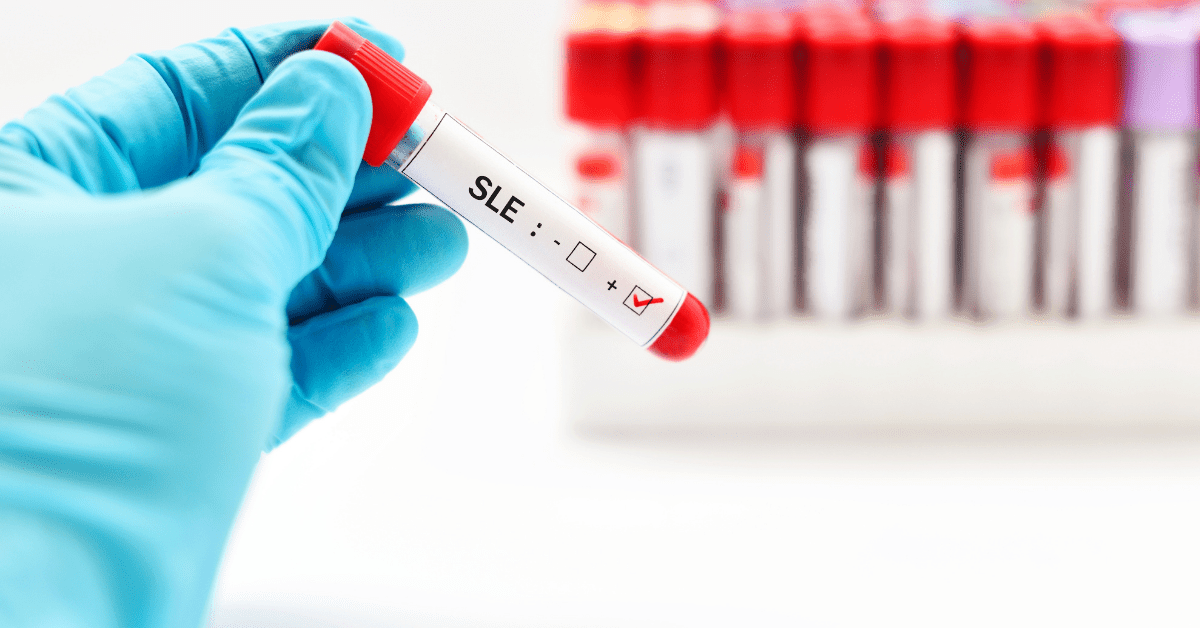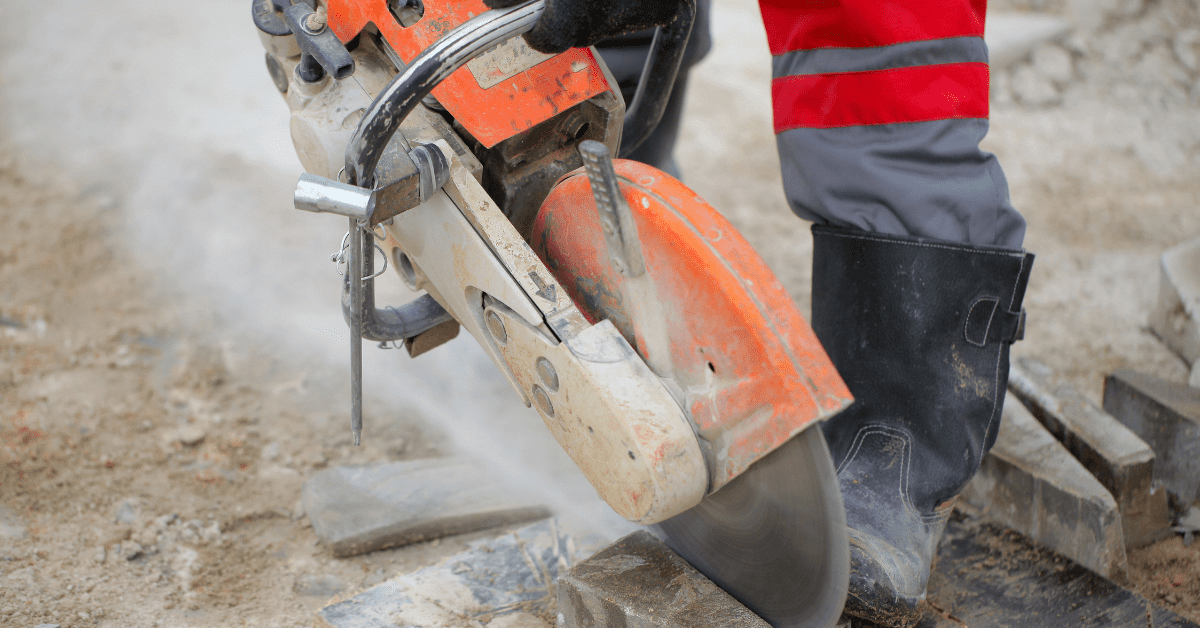Manual labour involves working with your hands. But the dangers of such work come in all forms. For example, for the most part, it means working in a dusty environment. This puts you at high risk of developing a number of work-related illnesses. This can include the likes of asthma and dermatitis. Yet what many people do not know is that such dust has links with autoimmune disorders like lupus.
In the United Kingdom, Construction is the third most dangerous industry to work in. This is according to the UK’s most recent Health and Safety Executive’s (HSE) report [1].
Such tragedies occur from:
- Falling from heights
- Struck by a moving vehicle
- Hit by a moving object
- Contact with moving machinery
- Becoming trapped by something collapsing or overturning
Yet, the threat to construction workers does not end there. They are at risk for many health issues further down the line.
For instance, using vibrating tools over time can cause “Hand-Arm Vibration Syndrome” [2].
What’s more, these same tools can generate noise levels high enough to be hazardous to hearing [3].
Plus, vibrating hand tools usually create dust, which can cause breathing issues. Hence it’s advised to wear PPE masks.

Dangers of Dust
When it comes to dust, “Asbestos” is numero uno. It’s by far the most well-known and most feared. It is made up of hook-like mineral fibres that can cause incurable lung damage. The outlook is an asbestos-induced lung disease known as “Asbestosis.” [4]
Since this is now common knowledge, usage has gone down. With fear following suit. Meaning many don’t worry about working in a dusty environment. Yet, there is danger lurking deep within the dust. One that should share a platform with Asbestos. One that has links with conditions like Systemic Lupus.
Crystalline Silica “What is it?”
“Silica,” otherwise known as “Quartz,” is a common substance found in rock, sand, clay, and soil.
For this reason, it’s in building materials such as concrete and bricks. Cutting, grinding, or drilling such things releases a cloud of dangerous dust into the air.
This dust will contain many air particles. Some of which are fine enough to reach deep inside your lungs. This proportion is called, “Crystalline Silica” and can cause some serious harm to your health.

Who’s at risk?
Construction workers have a higher risk due to the fact that they often work in closed spaces [5].
The same also applies to those who work in [6]:
- Mining
- Sandblasting
- Quarrying
- Tunnel work
- Masonry
- Glass manufacturing
- Ceramics work
- Steel industry work
- Stone cutting
- Any job that uses quartz-containing materials as a substrate or tool
- Farming
What’s more, this does not only include those who work in such environments. But in residential, rural, and urban settings too [7].
The End Result: Silicosis…
“Silicosis” is a disease related to crystalline silica exposure.
It is a “Fibrotic Lung Disease,” that doesn’t always show signs.
Fibrotic means this occurs when lung tissue becomes damaged and scarred. This creates thick, stiff tissue that makes it much harder for your lungs to work.
In short, the worse it becomes, the harder it is to breathe.
– Watch how crystalline silica damages our lungs below –
Like asbestosis, silicosis is incurable, but preventable. The most obvious route is to avoid breathing in this toxic dust.
So, if your neighbour is having work that involves the cutting of slabs, close those doors and windows. Keep indoors if you’re staying in. On the flip side, if it’s you doing the work. Use the correct PPE… especially the water pump. It makes such a difference. Don’t forget the mask also.
There are three types of silicosis, based on the level of crystalline silica inhaled [8]:
- Chronic Silicosis – This usually occurs from low-level exposure for 10 or more years. Over time, the silica dust causes areas of swelling in the lungs and chest lymph nodes. Thus, making breathing more difficult. Some label this type, “Simple” or “Classic” silicosis.
- Accelerated Silicosis – Develops 5-10 years after the first exposure. In this case, swelling in the lungs and symptoms occur faster than in chronic silicosis.
- Acute Silicosis – Caused by high exposure in a short amount of time. Symptoms appear within a few weeks to 4-5 years after the exposure. This type is sometimes known as, “Silicoproteinosis.” On this occasion, the lungs become very inflamed and even fill with fluid. Thus, causing severe shortness of breath and low blood oxygen levels.
… And the rest
Chronic silicosis is the most common type. This is the result of crystalline silica building up in a person’s lungs. Thus, it’s seen more in older adults e.g. 60-year olds [9]. Also, as we are unable to cough up these tiny particles, it keeps progressing post-exposure. This can result in:

Crystalline Silica’s link to Lupus
Acute silicosis is rarer than the chronic version and more severe. It is the result of breathing in a large amount of crystalline silica in a short amount of time. Symptoms can appear throughout a few weeks. These include [13]:
- Fatigue
- Weight loss
- Coughing and Spitting up sputum
- Coughing up blood – “Haemoptysis”
- Sharp chest pains
Those affected will soon progress into:
- Having difficulty in breathing – “Dyspnoea”
- Blueish tint in hands or feet – “Cyanosis”
- Fever – 37 ℃ to 40 ℃
Furthermore, they may even experience:
- Collapsed lung… both partial or complete – “Pneumothorax”
- Kidney damage… to the “glomeruli” – “Glomerulonephritis”
- The bacterial infection that is, “Tuberculosis”
It can also contribute to the development of some autoimmune diseases, such as [14]:
- Rheumatoid arthritis
- Systemic sclerosis
- Antineutrophil cytoplasmic antibody (ANCA)-related vasculitis
- Systemic lupus erythematosus
How does Silicosis cause Lupus?
Systemic Lupus is a complicated autoimmune disease that can affect the whole body.
One that has no known causes. But many potential triggers. These include several environmental factors.
– Click here to learn more about what can cause lupus –
Crystalline silica exposure is one example.
It is unclear exactly how autoimmune conditions occur from crystalline silica exposure. But, the idea is that it begins with the damage done in the lungs [15]:
When we breathe silica crystals in. It passes through our mouth and nose and travels deep down into the lungs. Due to their size, they can bypass our natural filtering systems. Meaning these teeny crystals manage to reach the end of our “Respiratory System.” To what is the “Alveoli.” These small, fragile air sacs are where oxygen enters the blood.
As we are unable to cough them back up, they become trapped. So, this becomes a job for our immune system. Dust cells called “Macrophages” set off to swallow up and dissolve these crystals. But as they are so toxic, they end up killing the cells.
When they die, they set off alarm signals called “Cytokines.”
The body reacts by sending out reinforcements called, “Fibroblasts.” They begin to cover the silica crystals in “Collagen,” a strong protein. Yet, they are a little too enthusiastic and begin to target healthy cells also. The outcome is scar tissue.
This damage can continue, even after the exposure to silica stops. It comes down to past exposure and how much has built up. If too much scar tissue forms, then the lungs can no longer function. This is what’s called, “Fibrosis.” Hence, silicosis is a “Fibrotic Lung Disease.”
This process leads to the activation of our “adaptive immunity.” This is a part of the immune system that never forgets. So, it keeps a watchful eye out for any future crystals… with weapons at the ready. Somehow this leads to the “breaking of tolerance.” “Tolerance” is the immune system knowing what cells, tissues, and organs should be there. Yet, for some reason, this breaks, and a friendly fire occurs. Thus, creating “auto-antibodies” in response to debris coming from the dead cells. Thus, paving the way for disorders like an autoimmune disease [15].
What’s more, it appears silica can build up in the kidneys too. Leading to a process like what happens in the lungs. They may also get damaged by the immune system dealing with the silica in the lungs. Maybe as a result of autoantibodies depositing within the kidneys [16]. Both of which end the same way, kidney damage.

Signs of Silica-induced Systemic Lupus
There are still many questions that need answering. However, this theory supports the issues seen in research papers. These include [17][18][19]:
- High levels of autoantibodies in the blood
- Immune complexes
- Kidney damage – “Glomerulonephritis”
- Foamy urine that’s full of protein – “Proteinuria”
Workers exposed to crystalline silica have a higher chance of getting systemic lupus. But this may only apply to males. As we know, lupus is more likely to affect females. To a ratio of around 9 to 1. Yet, high exposure to silica appears to increase a man’s risk of lupus 10-fold [19][20].
Not only does it seem to increase a man’s risk. Silica may even trigger a different version of systemic lupus. For instance, silica-induced lupus appears to [19][21][22]:
- Be males of older age – due to the nature of the job and silica build-up
- Have fewer arthritis issues
- Be less sensitive to the sun
- Reduced issues with red blood cells or haemoglobin – “anaemia”
- Lowered White blood cell deficiency – “leukopenia”
- Change in autoantibodies. e.g. more “anti-DNA topoisomerase 1” and fewer “antinuclear antibodies (ANA)”
Does Silicosis always trigger Lupus?
Silicosis does not always result in systemic lupus. In fact, the chance of developing a textbook systemic autoimmune disease is less than 5% [15].
One suggestion is that silica exposure triggers autoimmune disease in genetically susceptible people [23]. i.e. silica speeds it up in people highly likely to develop an autoimmune condition. Bringing about signs and symptoms much quicker than they would have on their own. Kidney damage and foamy urine are such examples.
The American Thoracic Society (ATS) recognises the link between silicosis and systemic lupus. But, only in cases of acute or accelerated silicosis [24]. Yet, it appears systemic lupus can also come as a result of “chronic silicosis.” [25].

My Story
As you may or may not know, I was diagnosed with Systemic Lupus after turning 22. Before that, I thought I was relatively fit. Weightlifting 5-6 times per week. Alongside working a labour-intensive job. One that becomes a lot more relevant when you consider crystalline silica.
My job role was what we British call a “Groundworker.”
This is a term for a subcontractor who constructs everything from ground level and below.
They are the first people on a construction site as they prepare land for building work. This includes installing mains and drainage. As well as concreting, kerbing and flagging. Then they finish the building work by laying roads, driveways, and footpaths.
It’s fair to say it can be a gruelling job. Although you do have the assistance of the big machinery. Both of which seemed like the biggest dangers of the job. Yet, they seem like small changes compared to crystalline silica. Which I would have been exposed to through:
- Cutting slabs, kerbs, etc.
- Digging up the ground
- Dust in the air from moving vehicles and people
- Making up and handling a dry mix (sand and cement)
- Sweeping up dry dust
– Click here to learn more about me –
My symptoms versus acute silicosis
I’m not saying that I would not have developed lupus if I were not a groundworker. I may well have had a high chance regardless due to my past. Including the times working in other trades, like:
- Air Conditioning Installer
- Hodd Carrier (on and off)
- Electrician’s Mate
- Plumber’s Labourer – refitting a bathroom
Still, silica may have been the straw that broke the camel’s back.
There are similarities between my symptoms and acute silicosis.
My experience includes:
- Fatigue
- Weight loss
- Breathing issues – put down to water retention around the lungs
- Kidney damage
Likewise, my experience of systemic appears similar to silica-induced lupus:
- Very few arthritis episodes
- No problems being out in the sun
- Not deficient in red or white blood cells
- I’m male… considerably younger than 60 though

What you should do if you’re at high risk like I was?
#1. Take your health seriously!
Ask your employer for that PPE. The face mask in particular. Ask them if the dust you’re handling contains silica. Be worried if they do not know what it is.
Refuse to dry sweep… use a vacuum or wet cleaning. What’s more, remember that the dust will stick to your clothes. Use compressed air to remove the dust off your clothing.
#2. Take DHA
DHA, or “docosahexaenoic acid”, is an anti-inflammatory fat that is part of the Omega-3 fat group. The other of which is “eicosapentaenoic acid” (EPA).
The best source of this fat is fatty, cold-water fish, such as:
- Herring
- Mackerel
- Salmon (Wild preferably)
- Sardines
- Tuna
- Wild-Alaskan Pollock
It is produced by the algae that fish eat and store in their bodies. We can also get it through consuming fish oil and/or microalgae oil supplements [26].
So why take DHA?
DHA can block the activation of lupus from silica exposure. In a study involving mice, 96% of lung lesions were stopped with DHA [27].
It is not clear why DHA can prevent the onset of silica-induced lupus. But DHA does block or delay [28]:
- Immune cells within the lungs
- Blood autoantibody increases
- The development of kidney damage – “glomerulonephritis”
How much DHA should to take?
Both studies here were on Lupus-prone mice.
Still, we can translate the dosage based on you eating 2000 kcal a day. This is the recommended intake for adults. This would convert into a dose of 2, 6, and 12 grams per day in one. The other results were from the equivalent of 2 and 5 grams a day.
In terms of safety, the European Food Safety Authority state that it is safe to eat up to 5 gram a day [29]. However, higher levels of up to 20 grams have been used in clinical therapy trials for established lupus [27].
Whether you choose fish oil or microalgae oil supplements may depend on your diet choice. Microalgae supplements are an option for vegetarians and vegans as it is meat-free.
My recommended approach is to take 2-gram capsules every day if free of ill health. This can be a supplement that contains DHA or a combination of EPA-DHA fish oil. If obese or have issues with inflammation (e.g. arthritis, congested sinuses, etc.), opt for two more capsules. The severity of inflammation will dictate how much you need. This would take it to a daily total of 4 grams. Leaving room to spare.
Also, spread the supplements over multiple meals. Preferably taking them with other fat-rich food. This will improve absorbance in the gut by stimulating the release of bile – capsules on their own will just slip on past.
You can also opt to raise your DHA levels through diet. But, click here to learn more about the benefits and risks of eating seafood first.
Final Thoughts
Most know to fear asbestos. But most do not realise there is danger still lurking in the dust.
Many will feel comfortable knowing the regulations against asbestos. Like the Control of Asbestos Regulations 2012.
But the same people have never heard of quartz or crystalline silica.
More education is needed among construction workers and tradespeople to help them fully understand the key reasons why they need to be careful.
PPE can save lives, but it’s easy to forget when you don’t really know the risks.
As can taking a daily supplement of “docosahexaenoic acid,” or DHA for short. This is fat that is in seafood, which offers its own risks and rewards.
– Click here to learn more about the good, the bad, and the ugly of eating fish. –
I would love to know your thoughts. Feel free to drop a comment below or contact me.
If you like this article, check out my other articles here.
Pingback: 1 Powerful Treatment for Lupus your Doctor doesn't discuss - but should! -
Pingback: Phthalates: Hard to say; Harder to Avoid (But here's 3 Steps you can take) -